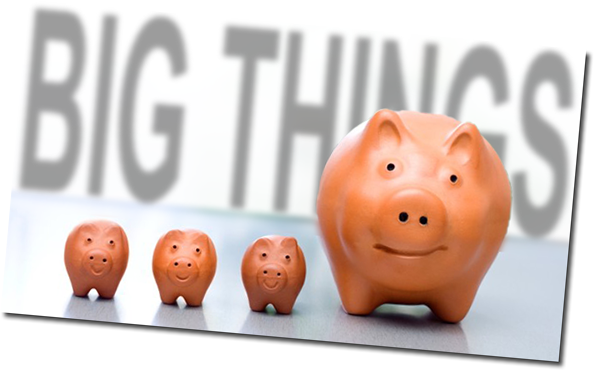 March 10, 2025
March 10, 2025
What You Need to Know Today:
Saturday Night Quarterback on a Sunday says, For the week ahead expect…
I expect a two-ring (at least) circus on Capitol Hill as Congress confronts two years worth of budgets. By law, the President is required to submit a budget for the next fiscal year–in this case the 2026 fiscal year that begins on October 1 2025–by the first Monday in February. Yes, tomorrow, February 3. Maybe you remember, however, that Congress hasn’t passed a budget for fiscal 2025–the fiscal year that began on October 1, 2024. And that the government is operating under a continuing resolution (a CR) that expires on March 14.

Fed signals fewer cuts, higher interest rates, higher inflation in 2025
In today’s quarterly update to its projections on economic growth, inflation, and interested rates in its Dot Plot survey of sentiment, Fed officials and governors forecast fewer rate cuts for next year than in their September projections, and they saw the fight against inflation making considerably less progress in 2025. According to the median estimate, they now see the benchmark interest rate reaching a range of 3.75% to 4% by the end of 2025. That would mean just two 25 basis-point cuts. The Fed’s projections are considerably more pessimistic than investors or Wall Street economists are. A majority of economists surveyed by Bloomberg had expected the median estimate would point to three cuts next year.

As expected, the Federal Reserve cuts interest rates by another 25 basis points
Today, December 18, the Federal Reserve lowered its benchmark interest rate for a third consecutive time.The Open Market Committee voted 11-1 to cut the federal funds rate to a range of 4.25%-4.5%. Cleveland Fed President Beth Hammack voted against the action, preferring to hold rates steady.

Please watch my new YouTube video: Hot Money Moves NOW! The dollar
Today’s Hot Money Moves NOW is U.S. Dollar. The dollar has been on a good run and is up 7% in the last three months, 2% in the last month. I expect this to continue with higher tariffs, and a Fed that will remain steady while other currencies are seeing more volatility. To get in on this you can buy an ETF like Invesco DB US Dollar Index (UUP), currently up 10.19% YTD with a 75 basis point expense ratio. Another option would be the WisdomTree Bloomberg U.S. Dollar Bullish Fund (USDU), up about 11% YTD with a 50 basis point expense ratio. WisdomTree buys Treasuries while Invesco uses futures but both are similarly sized ETFs and good ways to play the US dollar.

Trade war with Canada could be really nasty
Canada is looking at imposing taxes on major commodities it exports to the United States-—including uranium, oil and potash—if the incoming Trump Administration carries out a threat to impose 25% tariffs on Canadian exports.

So much for that easy fix to China’s consumer economy
China’s retail sales growth unexpectedly weakened in November. Retail sales rose 3% from a year ago. That was the the slowest annual growth rate in three months and it was well below even the most bearish forecast.
Just last week Chinese policymakers elevated boosting consumption to the top priority for next year. That marked , only the second time in a decade that the consumer economy was the focus of official policy.

Special Report: A New World for Dividends Pick #2 BEPC
Bookkeeping. I added this pick to my long Special Report post. I just want to make sure no one missed it. Dividend pick No.2: Brookfield Renewable Corp. (BEPC)
Live Market Report (20 minute delay)

Palo Alto takes a beating after it lowers guidance; preview of Nvidia tomorrow?
t should be a familiar story in this priced-to-perfection market: Company beats big in current quarter but lowers guidance and stock takes a dive. Latest victim? Palo Alto Networks (PANW). The stock is down 14.09% at 4:30 New York time today. And with Nvidia scheduled to report tomorrow after the close, you can bet the market will be on edge tomorrow.

Special Report: 10 Penny Stock Homeruns #6 LYSDY
Lynas, one of the largest producers of rare earth minerals outside of China (and one of only two non-Chinese processors of rare earth minerals) is my sixth Penny stock pick for my Special Report.

Saturday Night Quarterback says, For the week ahead expect…
I expect the market reaction to Nvidia’s (NVDA) earnings report, to be released after the close on Wednesday, February 21, to tell investors a lot about the short-term direction of this stock market. We’re likely to learn more, however, from the reaction to an Nvidia beat rather than from an earnings miss.

Get ready for the Nvidia circus
Can you hear the barkers yelling to the crowd? It’s Wall Street analysts rushing to raise their target prices for Nvidia (NVDA) ahead of next week’s quarterly earnings report. On February 21, after the close, Nvidia is expected to report earnings of $4.18 share, up from $0.65 a share in the quarter a year ago, on revenue of $20.5 billion. And even though the stock is up 47% for 2024 as of the February 15 close and up 219% for the last year, Wall Street analysts are rushing to increase their target price on the shares.

Please Watch My New YouTube Video: Quick Pick Cheniere Energy
Today’s Quick Pick is Cheniere Energy (LNG). Cheniere is a liquified gas supplier and the stock was down about 7.5-8% this year. Much of that drop was a reaction to the Biden administration’s decision to delay permits for new LNG export facilities in order to put pressure on the industry to decrease their methane emissions. However, this is essentially a non-issue for Cheniere since the company’s most recent expansion had already been permitted. The company is on track to go from a capital-intensive/debt heavy stage to putting billions into new sites and export facilities to a generator of free cash flow from those completed facilities. The current dividend is only 1.05% but the total yield, (dividends plus stock buybacks) is about 6.05%. Management has said they believe there will be enough free cash flow to raise the dividend rate by 10% a year from now until the mid to late 20s. In my opinion, demand for LNG is shifting as markets like Japan and China are transitioning to nuclear or solar and wind, but there is still growing demand from places like India, which is looking to transition away from coal. Cheniere is predicting 3% annual revenue growth and I think that’s reasonable and enough to keep the cash flow and dividends moving. I will be Cheniere to my Dividend Portfolio on those future yield prospects.

Another day, another hotter than hoped inflation number
The Labor Department reported Friday that its producer price index—which tracks inflation before it reaches consumers—rose 0.3% from December to January. The index had dropped -0.1% in December. Measured year over year, producer prices rose by 0.9% in January. But the month to month increase in producer prices and at a higher month to month rate is the latest sign that getting inflation the “last mile” down to the Federal Reserve’s 2% target rate is going to be harder and take longer than expected.

The Fed sends up warning flag on commercial real estate loans: I’m adding to my KRE Put Options
The crisis in the banking sector linked to bad commercial loans is serious enough that it’s drawing more regulatory scrutiny from the Federal Reserve. U.S. regulators are “closely focused” on risks in commercial real estate loans, and have stepped up downgrades of...

I won’t worry too much about stocks until investors stop buying on the dip
Remember all that fear talk after CPI headline inflation came in at a 3.1% annual rate in January versus the projected 2.9%? Well, that lasted all of a day.

Please Watch My New YouTube Video: Inflation Stickier for Longer
Today’s video is Inflation: Stickier for Longer. The market is now beginning to suspect that the Fed has a last mile problem. The CPI numbers from Tuesday weren’t terrible, but they weren’t as low as the market hoped. Headline inflation was at 3.1% annual rate and core inflation was 3.9%–markedly better than the past high of 9%, but not quite hitting the 2.9% for headline inflation that economists were looking for. The miss has finished a flip in sentiment about a March rate cut. The CME FedWatch poll in January had March rate cut odds at 90% likely, now, just a month later, the odds of no action are up to nearly 90%. Only about a third of investors believe there will be a rate cut in May with odds of no action up to 61%. The calendar is being pushed out to June or July for cuts from the Fed. This has resulted in bond yields going back up, around 4.3% on the ten year Treasury, and stocks going down a bit. There is a hope out there that the CPI numbers were a January blip, but if you look at the breakdown of the inflation numbers, it seems clear that inflation is just plain sticky. The Atlanta Federal Reserve Bank index that looks at the sectors that tend to be sticky and how much they’re influencing the overall inflation rate shows that prices in those sticky inflation categories have stopped and that they are a major factor keeping inflation higher than hoped. . Additionally, while there’s been a big drop in goods prices, the price of services has not gone down nearly as much. The super core inflicts number, which looks a prices in the services sector after taking out the cost of shelter has stalled. All this to say, we’ve got good evidence that this last mile from 3% to 2% on inflation could take a while.

Special Report: 10 Penny Stock Home Runs Pick #5 VWDRY
My 10 Penny Stock Homeruns Pick #5: Vestas Wind Systems (VWDRY).
Technically, the Vestas Wind Systems ADR (VWDRY) isn’t a penny stock. By the strict definition, a penny stock sells for $5 or less and the Vestas ADR closed on $9.06 today, February 14. But I included Vestas in my previous penny stock list back on July 11, 2022, even though the stock closed at $7.80 that day. With the company reporting a return to profitability for 2023 in its fourth quarter earnings report released today, I think Vestas has (finally) turned the corner. And, frankly, I just don’t want drop it from this list just as things get good again for the company and its investors. (Vestas is a member of my Jubak’s Picks Portfolio. The position is up 65.6% since initiation on March 4, 2019.) Tomorrow, February 15, I’ll also add Vestas to my long-term 50 Stocks Portfolio.

Good but disappointing news on CPI inflation for January
Headline, all-items Consumer Price Index (CPI) inflation fell again in January, but not by as much as economists had projected before this morning’s report from the Bureau of Labor Statistics. In January prices rose at 3.1% year-over-year. That’s a slower increase than the 3.4% annual rate notched in December. But economist had projected that inflation would dip to a 2.9% annual rate. And stocks dropped on the disappointment.

Part 3 Worries Over a Top: OK, it’s not 2000, but that doesn’t mean there’s no risk in this market
When I wrote my post “Was the Meta Platform 20% pop the market top? An important sign, yes,, but not for the reasons you think” I wasn’t thinking of a three-part series. But then came Part 2 “Why his isn’t 2000–I don’t see a replay of the Dot-Com Bear Market.”
And now Part 3: “OK, It’s not 2000, but that doesn’t mean there’s no risk in the market.” Part 3 in this series is going to segue right into the new Special Report that I’ll post on Wednesday with seven concrete steps I think you should implement now to protect your portfolio. But for today, I’m going to focus on a framework for thinking thinking about reward and risk in the current market. Think of the topic as “Why your portfolio needs protection now–even if we aren’t looking at a Bear Market.”

Please Watch My New YouTube video: Hot Button Moves Now! Short regional banks
I’m adding a bit more timeliness to this weekly video slot by moving away from my Trend of the Week series and changing it to “Hot Button Moves NOW” to highlight action you can take now.. Today’s Hot Button Moves NOW video is: Put Options on the S&P Regional Banking ETF (KRE). This is a play on continued trouble in the regional banking sector. New York Community Bank has just been downgraded to junk by Moody’s, (due to its real estate loan portfolio) and has dropped by 60%, taking the regional bank sector along with it. Last Monday I bought puts for April 24 at 14 strike price for $2.09 each and the put price has gone through the February 7 date when I recorded this video. I don’t think this is the end of regional bank trouble so I’ll be holding on to these puts until the bad news subsides. This is a good way to take advantage of some of these dips in the market and hedge risks. For more options and volatility stocks, subscribe to JubakAM.com.

Tick…tick…tick: Look at all the real estate debt that will mature in 2024
Nearly 20% of outstanding debt on US commercial and multifamily real estate-— $929 billion–will mature this year, requiring refinancing or property sales, Bloomberg reported today. The volume of loans coming due has swelled 40% from an earlier estimate by the Mortgage Bankers Association of $659 billion, a surge attributed to loan extensions and other delays rather than new transactions. About $4.7 trillion of debt from all sources is backed by U.S. commercial real estate. An estimated $85.8 billion of debt on commercial property was considered distressed at the end of 2023, MSCI Real Assets reported, citing an additional $234.6 billion of potential distress.

Saturday Night Quarterback says (on a Sunday), For the week ahead expect…
I expect another downward move for inflation when the January Consumer Price Index (CPI) is reported on Tuesday. Economists surveyed by Bloomberg expect that the core consumer price index, which excludes move volatile food and fuel prices, will show a year over year rate of increase of 3.7% in January. That would be the slowest year-over-year increase since April 2021.

Special Report: 10 Penny Stock Homeruns Pick #4 NLLSF
I’m playing catch up on this Special Report. I’ve got picks #5, #6, and #7 almost ready to post. My 10 Penny Stock Homeruns Pick #4: Nel (NLLSF).

Please Watch My New YouTube Video: Quick Pick CVS
Today’s Quick Pick is CVS Health (CVS). CVS owns a unique combination of healthcare delivery channels. Drugstores, yes–9,000 of them. But the company also owns health insurance company, Aetna, and Caremark, the largest pharmacy benefit manager. And recently it moved into the primary care marketplace through its acquisition of Oak Street. The company reported earnings on Wednesday, February 7, and the stock was up about 3.25% after that. While the earnings were good, (they beat by $0.13) the guidance is what is important here. The company projected higher costs for 2024 and cut guidance for GAAP earnings ($7.06) and adjusted earnings ($8.30). The reason the stock went up despite these cuts is that everyone was expecting DEEPER cuts to guidance. CVS has been signaling for weeks that rising costs in 2024 could be painful for the healthcare sector as a whole, and the relatively minor cuts in guidance led to a rally in the stock. Morningstar calculates a fair value for CVS Health of $103 a share. The stock closed at $76.32 on February 9. The stock also pays a 2.36% dividend. The stock is a member of my Dividend Portfolio. That position is up 31.25% since October 28, 2020.

Part 2 Worries over a top: Why this isn’t 2000–I don’t see a replay of the Dot-Com Bear Market
As I wrote a few days ago in my post “Was the Meta Platform 20% pop the market top? An important sign, yes,, but not for the reasons you think” I do think this stock market rally is putting in a top.
But I’m not worried that we’re looking at a reply of the Dot-Com crash and Bear Market that took the NASDAQ Composite down 40% in 2000 after that tech-heavy index gained more than 85% in 1999.
Why not? Let me count the ways. I get to four.

Please Watch My New YouTube Video: A Battle Between Fear and Greed (and hear me sing too)
Today’s video is A Battle Between Fear and Greed. As the S&P gets closer to 5,000, we clearly see the battle between fear and greed. With the market breaking records on the high end, there’s a fear that it’ll crash, and that it has to go down eventually. However, the greed side is a fear of missing out on this rally that started in September as well as a likely market boost from a rate cut in May. So how do you play this mix? My thought is to go with the greed side for now, but not be too greedy. Be aware that investors aren’t likely to get out of stocks in a big way until they see the projected gains from a Fed rate cut. At worst the market may move sideways until then, and some consolidation in the market leaders would be good, so I wouldn’t do much selling just yet.

Replacing South Korea with India in my Perfect 5 ETF Portfolio (and adding it to Jubak Picks Portfolio too)
I try not to argue with cash flows. Especially when I’m making asset allocation decisions. And right now global cash is heading for India. A number of reasons. Portfolio managers looking for diversification need emerging markets exposure and India looks like the best bet. Going long India is, in effect going short China since much of the new India money is essentially old China money fleeing what looks like an economy set to struggle for a while. And there is an India fundamental story based on an economy headed for 7% growth. For all these reasons I’m added the Franklin FTSE India ETF (FLIN) to both my Perfect 5 ETF Portfolio as rep



